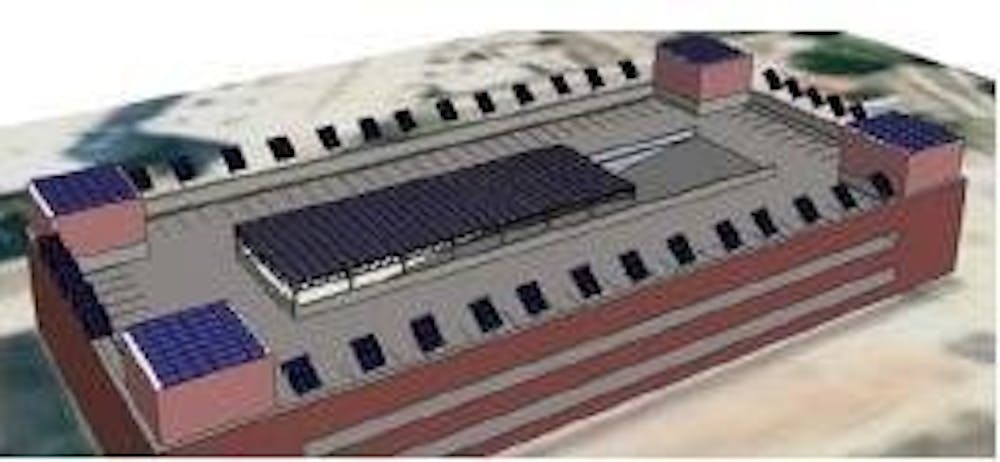As Auburn tip toes toward reducing its carbon footprint, 24 solar panels have been installed on the parking deck of Jordan Hare Stadium to power 10 electric vehicles and other needs for the University.
The panels installed are used to power the electric vehicle charging stations on the bottom level of the stadium.
"Electricity basically flows where it's needed," said Energy Engineer for Facilities Ken Martin. "Most likely, it's powering lights in the deck or things that are using power within the deck. If there are no cars being charged, the power generated from the panels is used on the electric grid within the University."
The panels were installed in late April and are capable of producing 6.6 kilowatts of power per day, which comes to about 13,250 kilowatt hours of electrical energy per year.
"It all started with a conversation that our office had with Dan King, the vice president for facilities," said director of Campus Sustainability Operations Mike Kensler.
"He said that he was interested in providing funding for some innovative and prototype sustainability projects, and he said, 'If you all come up with something interesting, then we'd be glad to provide the funding for it.'"
Biosystems engineering seniors also worked with the office of sustainability and facilities on a potential expansion of the solar panels.
Kensler said his office and King are working on ideas to move away from depending on fossil fuels and relying more on renewable energy sources.
However, the questions remains on how to fund future endeavors.
"(King) is being very aggressive and consciences about saving energy on campus," Kensler said. "He's leading the charge for the University to become more energy efficient."
The panels are located on the top of the two eastern stairwells in the stadium's parking deck.
While Martin believes advances in renewable energy is feasible in the future, funding remains an issue.
"While the prices are getting better on the panels ... and efficiency is getting better, we also have really good electrical rates here," Martin said. "We're not in the best position to jump on solar (energy) because the payback can be longer, but I think if we were to expand we'd love to find some sort of grant funding to help with the cost. That would greatly help the payback."
Kensler also mentioned a possible new strategy in renewable energy for the University.
"We're also thinking about starting a fund working with facilities that would pay for this kind of energy conservation and renewable energy project," Kensler said. "We are thinking about ways that can create creative funding sources to pay for this kind of thing."
Eight out of the 10 charging stations are occupied by electric vehicles: two from the office of accessibility, three student-run free taxis that provide rides to locations in close proximity to campus, two from the College of Liberal Arts information technology staff, and one for a Johnson's Controls contractor who monitors and services campus buildings.
Martin said as the University attempts to move toward renewable energy sources, it must continue to look into potentially generating its own energy.
"We have some goals in our energy reduction strategy where we'd like to eventually cap the amount of purchased utilities based on the 2010 baseline," Martin said. "That means even as we're building these new buildings, we'd like to not buy any more kilowatthours."
Do you like this story? The Plainsman doesn't accept money from tuition or student fees, and we don't charge a subscription fee. But you can donate to support The Plainsman.





